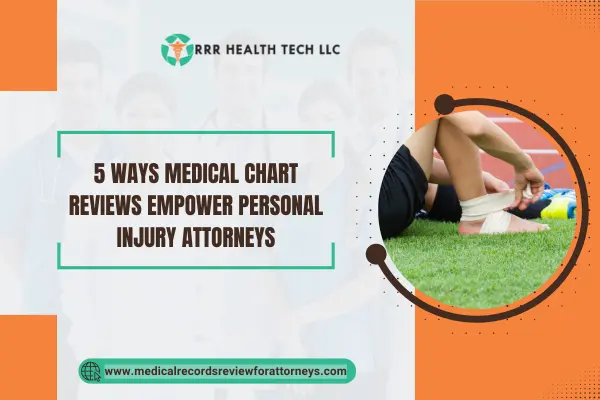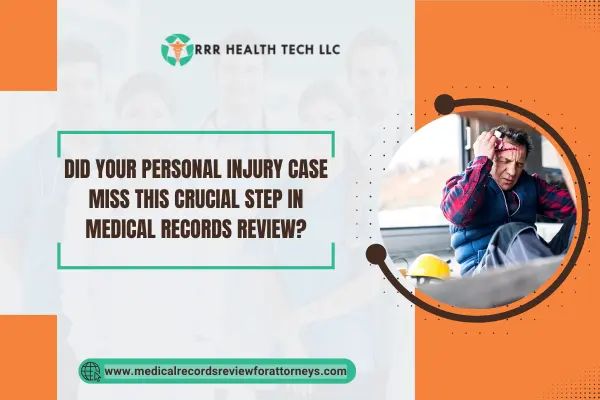
Introduction
Crush injuries are one of the leading injury types in construction. This type of injury is associated with high physical damage and many complications of body functions over time. Understanding these injuries, their impacts, as well as the causative factors and the legal ramifications of the injury are critical for attorneys serving clients. This piece delves into the medical records review services and the relevant issues concerning construction site injuries and how they can collaborate with lawyers to build a case.
What Are Crush Injuries?
Definition and Overview
• Crush Injury: Crush injuries occur when a body part is compressed between two massive structures, causing extensive damage to the muscles, nerves, and blood vessels, as well as severe damage to the body part involved.
• Common Sites of Injury: Most often, crush injuries occur in hands, feet, and legs although they can happen to any part of the body.
Types of Crush Injuries
• Open Crush Injuries: Involve a skin break with underlying tissues being visible.
• Closed Crush Injuries: The skin is intact, but there are damages under the skin.
Causes of Crush Injuries on Construction Sites
Common Scenarios Leading to Crush Injuries
• Having Possible Operators: Cranes, Forklifts, Excavators, and Bulldozers are known to be capable of causing crush injury.
• Falling Objects: Tools and materials that drop from above present a major injury hazard.
• Improper Safety Protocols: Not following safety measures increases the probabilities of a crush injury occurring.
Contributing Factors
• Inadequate Training: Workers that lack sufficient training in the operation of the necessary equipment face greater risk.
• Poor Site Conditions: Work areas may become hazardous if they are disorganized or not cleaned frequently.
• Failure to Use Personal Protective Equipment (PPE): Injuries are more severe when proper protective equipment is not used.
Legal Implications for Attorneys
Understanding Workers’ Compensation
• Workers’ Compensation: Injured employees can be expected to receive payment for some medical expenses, wages lost due to the injury, and any needed rehabilitation services.
• Third Party Claims: Some employees attempt to claim payment from people other than their employers such as equipment vendors or subcontractors.
Proving Negligence
• Elements of Negligence: Proof must be provided that the employer did not take reasonable care to secure a safe workplace and the employee was injured as a result.
• Importance of Medical Records: Detailed medical records serve as proof for how badly an employee was injured and how it affected his life.
The Role of Medical Records Review Services
How We Assist Attorneys
- Detailed Analysis: Our medical records review services help attorneys identify critical information related to the injury, including:
- Treatment history
- Prognosis
- Impact on daily life
- Expert Testimony: Medical professionals can provide insights based on reviewed records, strengthening the case.
Importance of Accurate Documentation
- Legal Relevance: Accurate medical documentation is essential for substantiating claims and ensuring fair compensation.
- Identifying Patterns: Reviewing multiple cases can reveal trends in injuries, aiding in establishing negligence.
Case Studies
Case Study 1: Crush Injury from Heavy Machinery
- Overview: A construction worker has a crush injury after a crane operator did not properly secure the load.
- Challenge: Proving who is liable and how injured does the worker get.
- Solutions: Comprehensive evaluation of the medical records indicated that there was significant lack of improvement; this supported the claim made for the payment of damages.
Case Study Method 2: Crush Injury from Falling Objects
- Overview: One worker suffered injury because a bunch of materials were carelessly piled up causing them to topple over.
- Challenges: To justify the lack of care given by the employer.
- Solutions: The medical documents showed evidence of several operations and constant rehabilitation; this underlined the intensity of the injury.
Conclusion
The possibility of suffering from crush injuries sustained by workers on construction sites is dangerous and may lead to complicated legal matters. The medical, social, and legal ramifications of such injuries are important for surgeons and attorneys alike. Through the use of medical records review services, legal clients are better able to construct case strategies, and injured workers are put in a position to receive the benefits that they are entitled to.


